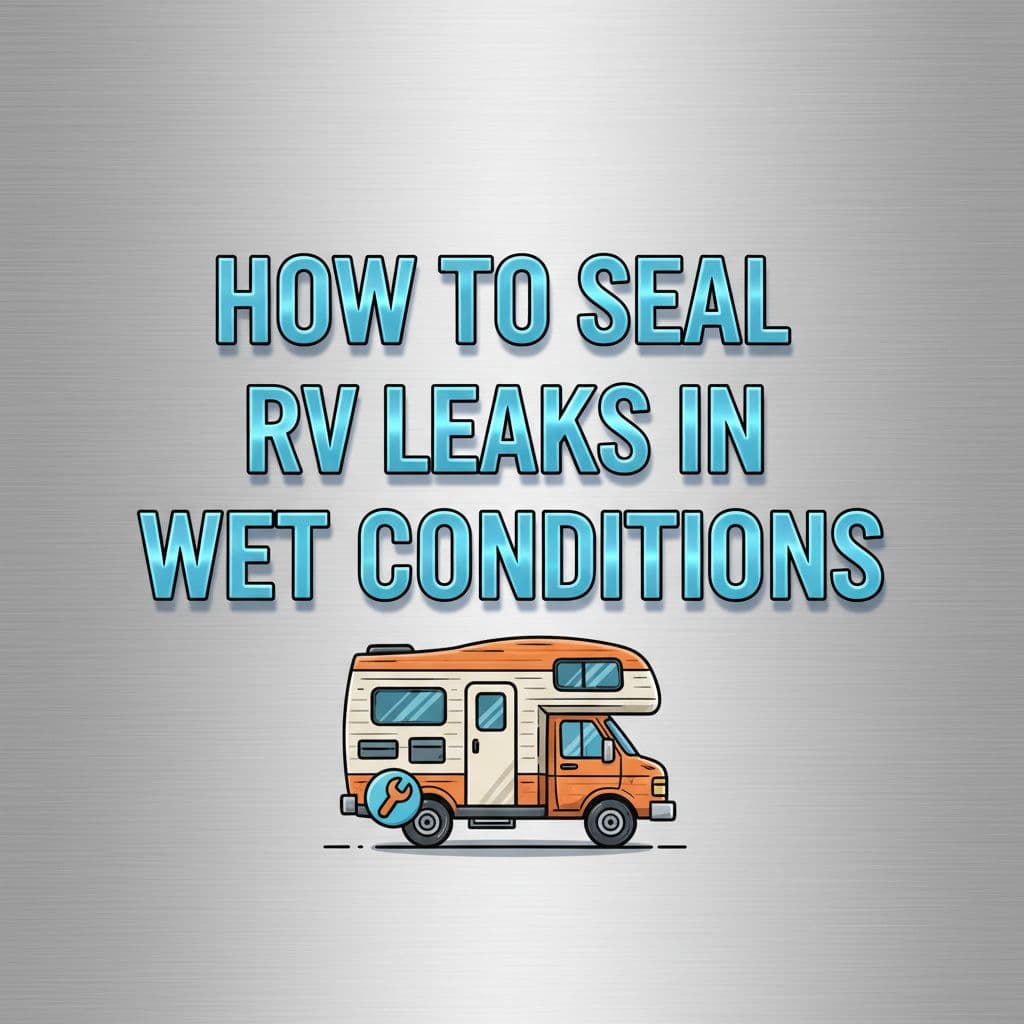A Dutchess County RV shop discovered a faster, cleaner way to patch and seal when surfaces stay wet.
It started with a familiar problem. An RV dealer I serviced in Poughkeepsie, N.Y., fought constant leaks — roof seams after heavy rain, cracked tank housings, vent collars that loosened in the cold.
Every sealant failed the same way. The repairs took too long to cure, and once moisture crept under the edge, adhesion let go.
The foreman said what every lead tech eventually says: “We just need something that works when it’s wet.” They weren’t asking for a miracle — just a reliable way to keep units watertight without half-cured seams or throwaway patches.
“They’d tried several sealants that wouldn’t hold once the surface was wet,” I told him. “What they needed was something that could stick right away, even if the surface wasn’t dry.”
That simple requirement — instant adhesion in less-than-ideal conditions — led to a discussion about waterproof patch and seal tape. It wasn’t new, but it had evolved into a legitimate maintenance tool.
Why Conventional Sealants Fail in RV Maintenance
Most sealants need perfect conditions. Dry surfaces, mild temperatures, and time to cure — all rare in a working RV shop. Roof panels expand under UV heat, tanks flex under load, and adhesives peel from fiberglass or aluminum.
Understand what that means in practice. When a product depends on drying, vibration and thermal cycling will eventually reopen the seam. That’s why leak repair often feels like a revolving door.
Look for solutions that seal mechanically, not chemically. Pressure-activated tapes and patches eliminate the wait time and create a barrier through surface contact instead of evaporation or curing. That’s the Tier-3 distinction: immediate performance that holds under movement.
What to Look For in Wet-Condition Sealants
Start with surface conformity. Choose a patch or tape with a thick, rubberized adhesive that molds to irregular surfaces. That flexibility fills scratches, oxidation, and texture gaps where liquids normally fail to bond.
Check the backing. A UV-resistant layer keeps sunlight and heat from breaking the seal — essential on exposed roofs and side panels.
Verify wet-surface performance. The best adhesives don’t just tolerate moisture — they grip through it. Some can even be pressed underwater to stop a slow tank or drain leak without draining the system.

Apply with intention. Firm, even pressure from the center outward forces out trapped air and locks in full contact. No cure clock, no wait time — just mechanical hold.
Where It Earns Its Keep
In real shop use, these pressure-seal materials prove their worth everywhere moisture and time collide.
Roof seams and vents: Instead of waiting for sun or heat lamps, a tech can press the patch directly onto a damp seam and get an instant watertight bond that stays flexible under expansion and movement.
Water tanks and fittings: When joints seep or crack, patch them in place without draining. Hours saved become uptime gained.
Exterior panels and housings: Around ladder mounts, awnings, and lights, look for a seal that closes irregular gaps where old caulk lines failed.
Emergency roadside fixes: In field calls, a quick section of tape can hold through a storm until a full rebuild.
The real advantage is time. The ability to seal instantly turns reactive maintenance into same-day completion.
Field Considerations and Limits
Know the boundaries. No tape replaces a high-pressure fitting or radiator line, and none will bond to silicone or water-repellent coatings.
Prep still matters. Even if the surface is wet, remove dirt, algae, and debris. Round the patch corners and extend coverage beyond the damage to prevent lifting.
Use steady pressure. Two minutes of firm contact activates the adhesive; added weight during the first day increases bond strength.
Expect long service life. A proper patch handles –70°F to 200°F, resists UV and moisture creep, and stays flexible through vibration — traits that define Tier-3 performance in the field.
What the Shop Learned
After several weeks, the technicians changed their entire workflow. No more waiting for dry weather — they could patch and move on with confidence.
They learned the difference between convenience and control. A sealant that performs in motion under moisture doesn’t just save time; it builds trust in the repair.
The foreman summed it up plainly: “If it’s wet and leaking, this is what we reach for first.”
It became standard gear not because it was new, but because it worked when nothing else would.
Final Thought
Maintenance rarely happens under perfect skies. Leaks don’t wait, and neither can the people who fix them.
When choosing any patch or seal material, look for immediate adhesion, flexibility under stress, and resistance to UV and temperature swing. Those are the hallmarks of Tier-3 quality — products built for technicians, not marketing departments.
That’s the real takeaway: precision made simpler, reliability made repeatable.
